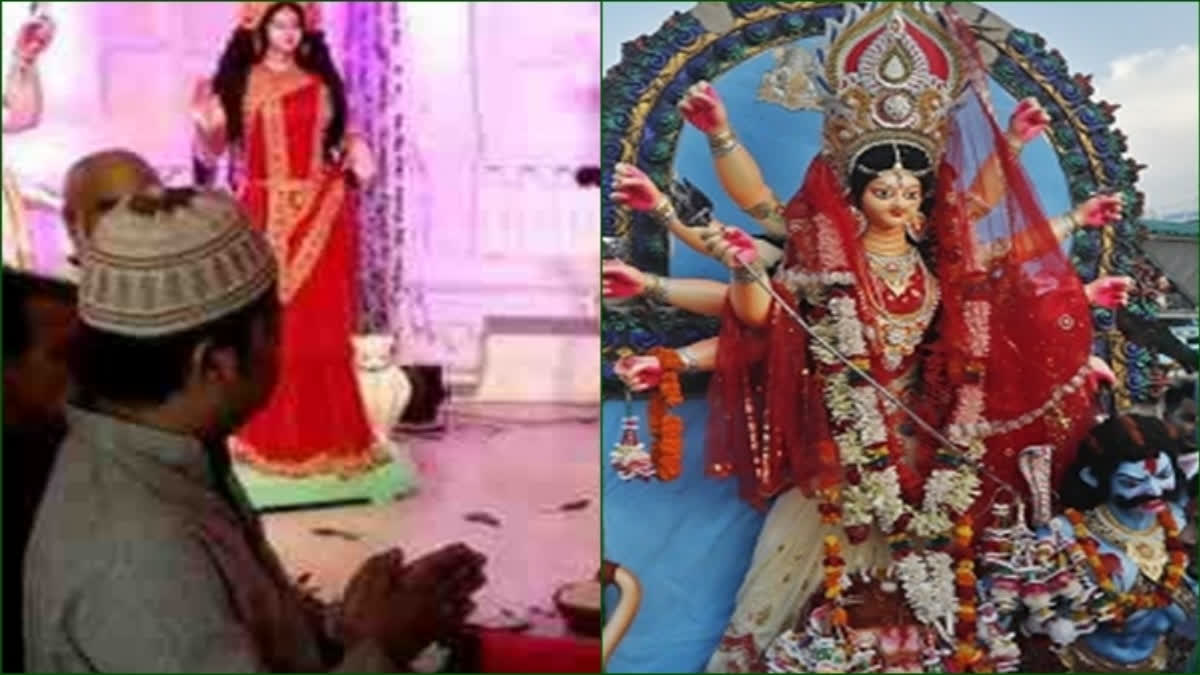Karimganj (Assam): The villagers of last Indian hamlet along India-Bangladesh border are gearing up for Durga Puja despite daily hardships and administrative restrictions imposed on them due to the remote location at the tip of the frontier. The everyday life of the 44 families in Gobindapur village at the India-Bangladesh border in Assam’s Karimganj district is not normal as the village falls in the no man’s land zone between the International Borders of the two countries, separated from the mainland by a barbed wire fence.
Work on the 124-km-long barbed wire fencing began in 1994 in the Barak Valley areas of Assam. Although the residents of Gobindapur village have voting rights, they are Indian citizens, yet the villagers have to abide by a lot of regulations. The gates of the fencing are opened in the morning and closed by the Border Security Force (BSF) before dusk. The villagers must return to their homes within this time. Moreover, outsiders cannot enter the village without the proper permission of the authorities.
However, the village celebrates Durga Puja with full flavor. Gobindapur village has the history of organising Durga Puja for more than 100 years. The village has a small temple where the puja is organised every year. The preparations have been started at the village to celebrate this year’s Durga Puja too.Birendra Namasudra, one of the villagers, told news agency IANS, “We were separated from the Indian mainland due to partition. However, we did not want to leave our ancestral home. There are several rules at the border. According to the policy given by BSF, we have to return to the village before evening. As a result, we do not have the opportunity of pandal hopping during the Durga Puja.”
The worship of Goddess Durga has been going on in this village for more than 100 years, according to the villagers. They claimed that they have the blessing of Goddess Durga, and that is why they can continue the puja.The economic situation of the villagers is not good. But the whole village is decorated during Durga Puja and Mangal Aarti is also held in the evening. On the nights of Ashtami and Navami, small competitions are held. Prasad is distributed among the villagers for four days.Another villager, Bipul Das, claimed that although the Border Security Forces are somewhat strict, they are the ones who extend their helping hand in organising the puja.“The soldiers of the security forces come forward to help by providing financial donations, the provision of drinking water, the construction of pandals, lighting, and various materials,” he added.
Karimganj district shares a 92-km-long border with Bangladesh, mostly with Sylhet district of that country. Apart from Gobindapur, there are eight Indian villages located beyond the fencing. The other villages beyond fencing in Karimganj are Lafashail, Jarapata, Latukandi, Kuorbag, Mahisaahan, Tesua, Barmagul, and Deo Tuli. However, no other villages celebrate Durga Puja.Gobindapur village has 44 Indian families; 42 of them are Hindu, and the rest are Muslims.The Muslims of Gobindapur village also join the festivities of the Durga Puja. The entire village spends the four days of Puja with joy.
Another villager, Titu Namasusra, said, "During the Covid-19 pandemic, we had to stop the Durga Puja temporarily due to financial distress. We don’t seek support from outsiders; it’s our own Durga Puja. As the situation improved, we started celebrating the previous year."



